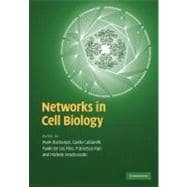
Note: Supplemental materials are not guaranteed with Rental or Used book purchases.
Purchase Benefits
What is included with this book?
| List of contributors | p. viii |
| Introduction | p. 1 |
| Network views of the cell | p. 4 |
| The network hypothesis | p. 4 |
| The central dogma and gene regulatory networks | p. 5 |
| Protein-protein interaction networks | p. 7 |
| Metabolic networks | p. 9 |
| Signaling networks | p. 11 |
| Networked networks and cell functionality | p. 12 |
| Concluding remarks | p. 13 |
| Transcriptional regulatory networks | p. 14 |
| Introduction | p. 14 |
| Transcriptional regulation in prokaryotes and eukaryotes | p. 19 |
| Structure of transcriptional regulatory networks | p. 20 |
| Evolution of transcriptional regulatory networks | p. 25 |
| Dynamics of transcriptional regulatory networks | p. 29 |
| Conclusions | p. 34 |
| Transcription factors and gene regulatory networks | p. 36 |
| Introduction | p. 36 |
| Promoters' complexity/eukaryotic gene promoters | p. 37 |
| Transcription factors | p. 41 |
| Bioinformatics of regulatory networks | p. 46 |
| Experimental methods for protein interaction identification | p. 53 |
| Introduction | p. 53 |
| Protein complementation techniques | p. 57 |
| Affinity purification methods | p. 62 |
| Protein complex purification and mass spectrometry | p. 65 |
| Protein and peptide chips | p. 73 |
| Other methods for interaction detection and functional analysis | p. 74 |
| Quality of large-scale interaction data | p. 75 |
| Comparison of methods | p. 77 |
| Conclusions | p. 80 |
| Modeling protein interaction networks | p. 83 |
| Introduction | p. 83 |
| Scaling laws and network topology | p. 85 |
| Predicting protein interactions | p. 87 |
| Towards models at an atomic level of resolution | p. 88 |
| Concluding remarks | p. 90 |
| Dynamics and evolution of metabolic networks | p. 93 |
| Introduction | p. 93 |
| Cellular metabolism and its regulation | p. 93 |
| Metabolism across disciplines | p. 96 |
| Dynamics of a metabolic system | p. 98 |
| Stoichiometric analysis | p. 100 |
| Constraint-based modeling: feasible states and optimality | p. 103 |
| Predicting genetic perturbations | p. 108 |
| Double perturbations and epistatic interactions | p. 109 |
| The ancient history of metabolism: from cell-scale to biosphere-scale | p. 112 |
| Conclusions | p. 116 |
| Hierarchical modularity in biological networks: the case of metabolic networks | p. 117 |
| Introduction | p. 117 |
| Modularity and hubs in biological networks | p. 119 |
| Scaling of the clustering coefficient: a signature of hierarchy | p. 121 |
| Method for finding network modules | p. 123 |
| A case study: the E. coli metabolic network | p. 126 |
| Hierarchy, fractality and the small world of networks | p. 131 |
| Conclusions | p. 134 |
| Signalling networks | p. 135 |
| Introduction | p. 135 |
| Chemical signalling: many pathways following a few general themes | p. 136 |
| Cross-talks among signal transduction pathways | p. 159 |
| Signalling networks, system organization and modelling | p. 166 |
| Conclusions and outlook | p. 169 |
| Complex networks: from local to global properties | p. 170 |
| Modelling the local structure of networks | p. 188 |
| Higher-order topological properties | p. 210 |
| Elementary mathematical concepts | p. 219 |
| References | p. 235 |
| Index | p. 269 |
| Table of Contents provided by Ingram. All Rights Reserved. |
The New copy of this book will include any supplemental materials advertised. Please check the title of the book to determine if it should include any access cards, study guides, lab manuals, CDs, etc.
The Used, Rental and eBook copies of this book are not guaranteed to include any supplemental materials. Typically, only the book itself is included. This is true even if the title states it includes any access cards, study guides, lab manuals, CDs, etc.